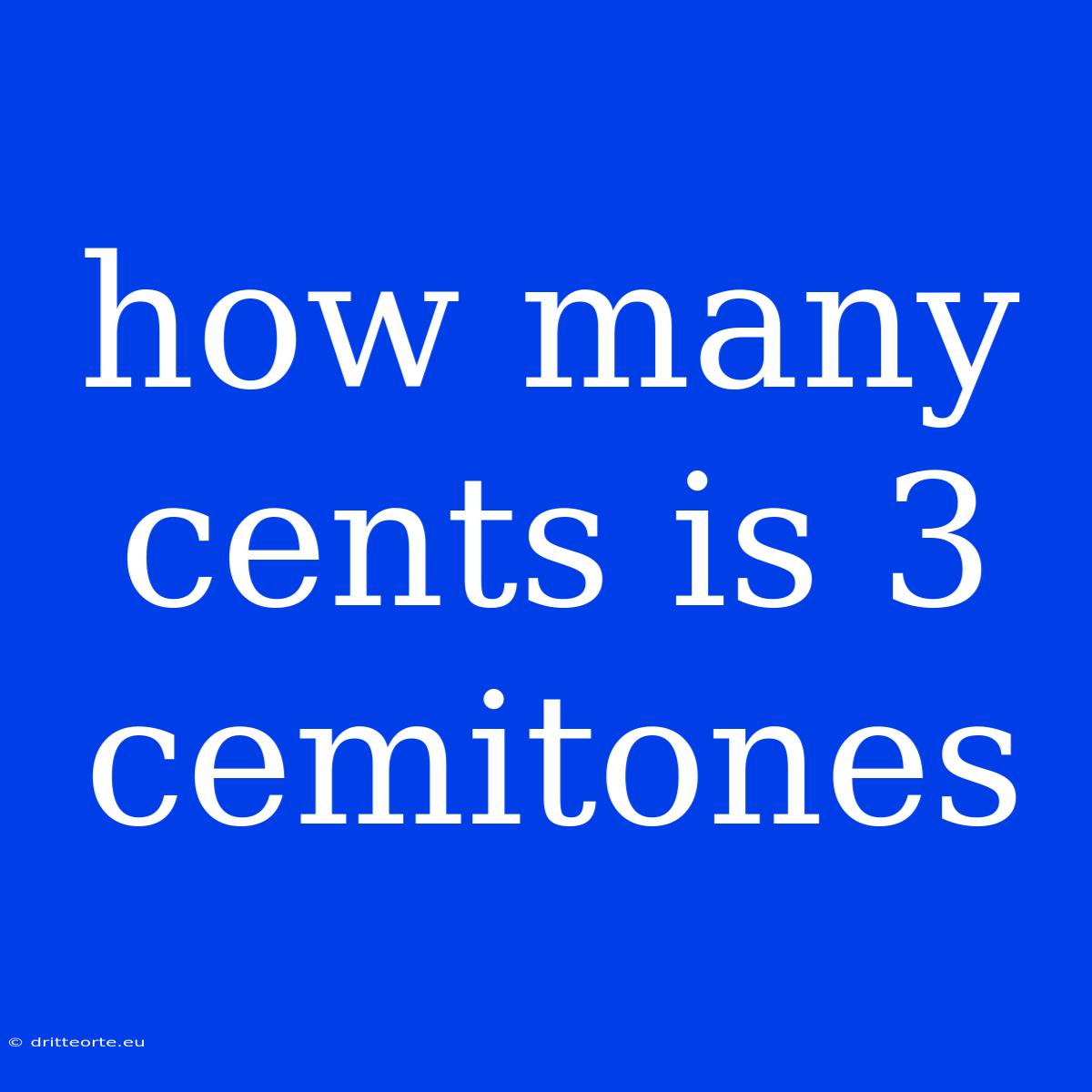How Many Cents is 3 Semitones? Unlocking the Secrets of Musical Intervals
Have you ever wondered how many cents are in 3 semitones? This seemingly simple question delves into the fascinating world of musical intervals and the precise measurements that define them.
Editor Note: Understanding semitones and cents is crucial for musicians, music producers, and anyone seeking to dive deeper into the intricacies of music theory.
Let's dive into the world of musical intervals and discover the relationship between semitones and cents.
Why This Matters: Understanding the relationship between semitones and cents is crucial for tuning instruments accurately, creating precise harmonies, and exploring the nuances of microtonal music.
Our Analysis: This article explores the conversion of semitones to cents, examining the fundamental principles and providing practical examples. We'll use precise calculations and clear explanations to ensure a comprehensive understanding of this musical concept.
Key Takeaways:
| Key Concept | Description |
|---|---|
| Semitone | A basic unit of musical interval, often defined as the distance between two adjacent keys on a piano. |
| Cent | A much smaller unit of musical interval, representing 1/100th of a semitone. |
| Conversion | The process of converting semitones into cents, based on a logarithmic scale. |
Semitones
Semitones are the building blocks of musical intervals. They represent the smallest distance between two notes in Western music.
A semitone is often referred to as a "half step". On a piano keyboard, a semitone is the distance between two adjacent black or white keys. For example, the interval between C and C# is a semitone.
Cents
Cents are even smaller units of musical interval, representing 1/100th of a semitone.
Cents allow for much finer distinctions in pitch than semitones. For example, if you want to adjust a note by only a tiny fraction of a semitone, you can use cents to achieve this level of precision.
Conversion
The conversion between semitones and cents is not linear but follows a logarithmic scale. This means that each semitone corresponds to a fixed number of cents, but the number of cents per semitone increases as the pitch gets higher.
To convert semitones to cents, we can use the following formula:
Cents = (1200 * log2 (frequency2 / frequency1)) / log2(2)
Where:
- Frequency1 is the frequency of the first note
- Frequency2 is the frequency of the second note
3 Semitones = 300 Cents
Therefore, 3 semitones are equivalent to 300 cents. This is because each semitone is equal to 100 cents, and 3 semitones multiplied by 100 cents per semitone equals 300 cents.
Practical Applications
Understanding the conversion between semitones and cents has several practical applications in music, including:
- Tuning Instruments: Many electronic tuners display pitch in cents, allowing for highly precise adjustments.
- Microtonal Music: Microtonal music explores intervals smaller than a semitone, often measured in cents.
- Harmony and Chord Progressions: Cents can be used to fine-tune the precise relationships between notes within chords, creating subtle harmonic variations.
FAQ
Q1: What is the difference between a semitone and a cent?
A1: A semitone is a larger unit of musical interval, typically represented as a "half step." A cent is a much smaller unit, representing 1/100th of a semitone.
Q2: Why is the conversion between semitones and cents logarithmic?
A2: The relationship between pitch and frequency is logarithmic. This means that equal intervals in pitch do not correspond to equal intervals in frequency. The logarithmic conversion ensures that the intervals are represented accurately in both semitones and cents.
Q3: How can I use cents in my musical practice?
A3: You can use cents to fine-tune your instrument's pitch, explore microtonal music, and experiment with subtle harmonic variations.
Q4: Are cents and semitones used only in Western music?
A4: While semitones and cents are commonly used in Western music, they are also relevant in other musical systems that utilize microtonal intervals.
Q5: What are some other musical intervals measured in cents?
A5: Many musical intervals, such as the major third, perfect fifth, and octave, can be expressed in cents.
Q6: How can I learn more about microtonal music and cents?
A6: Exploring resources on microtonal music theory, experimenting with microtonal tuning software, and engaging with musicians who specialize in microtonal music can provide a deeper understanding of this fascinating area.
Tips for Working with Semitones and Cents
- Use a reliable tuner: Electronic tuners can accurately display pitch in cents, facilitating precise tuning.
- Experiment with microtonal intervals: Explore microtonal music by adjusting pitch in cents to discover unique sounds and harmonies.
- Consult resources on music theory: Several online resources and books provide detailed information on semitones, cents, and microtonal music.
Conclusion
Understanding the relationship between semitones and cents is essential for musicians, music producers, and anyone seeking to delve deeper into the intricacies of music theory. By mastering this concept, you can refine your musical skills, create nuanced harmonies, and explore the world of microtonal music. The precise measurement of intervals in cents allows for greater control and creative expression in music composition and performance.

